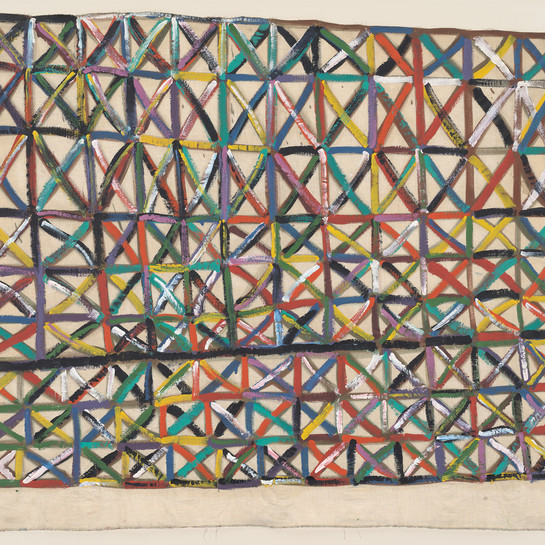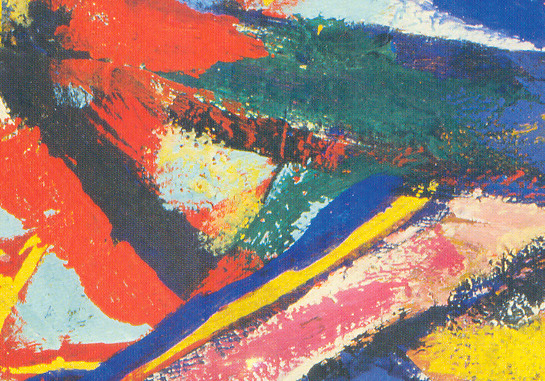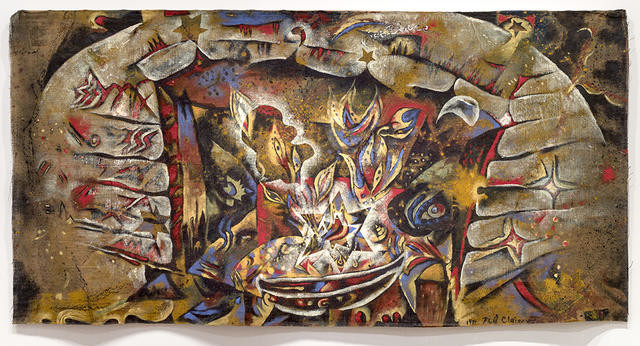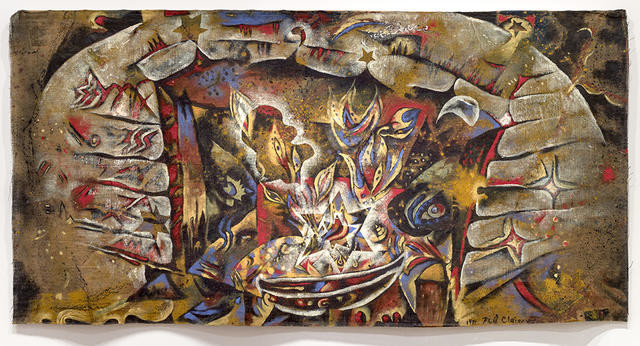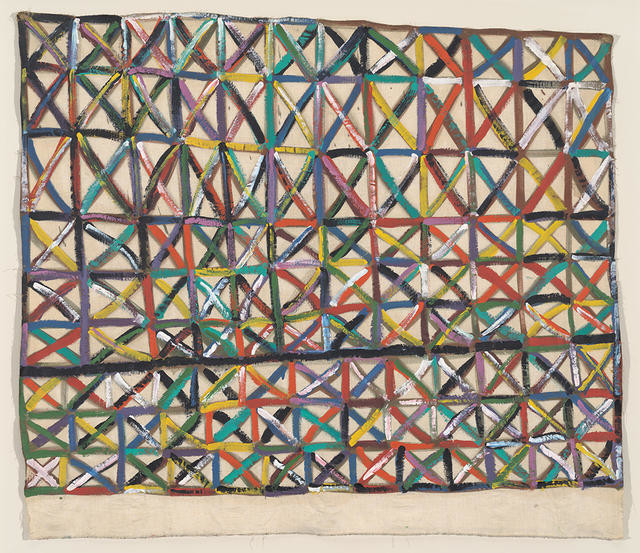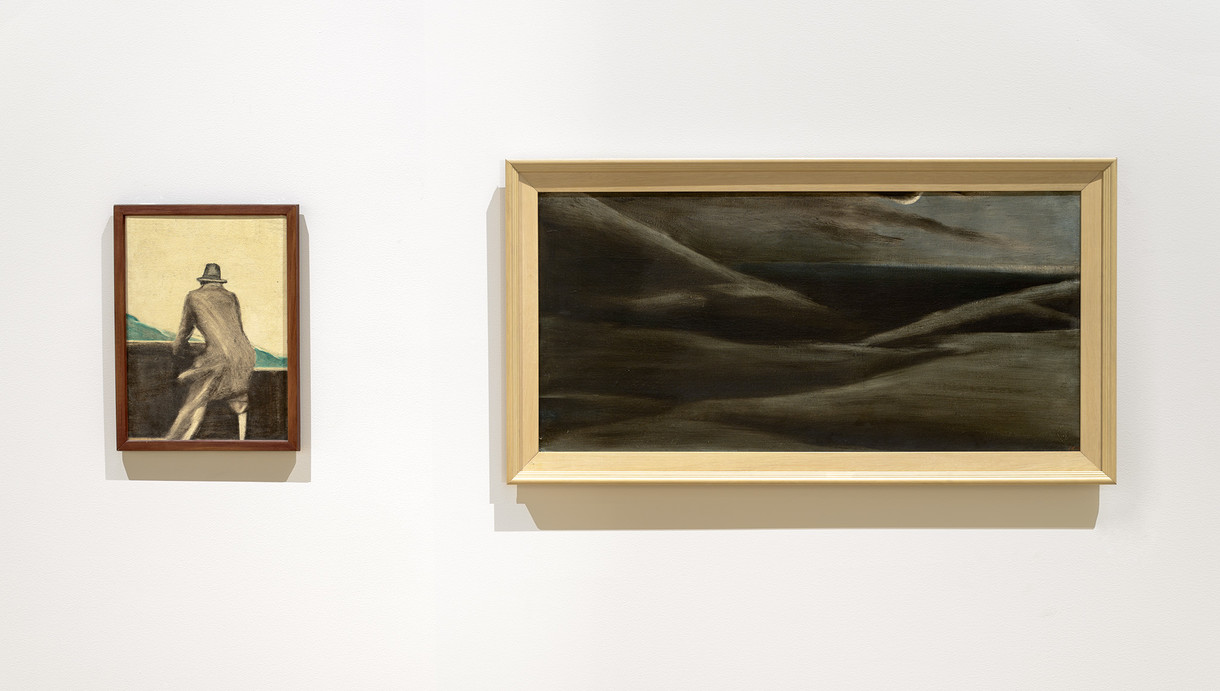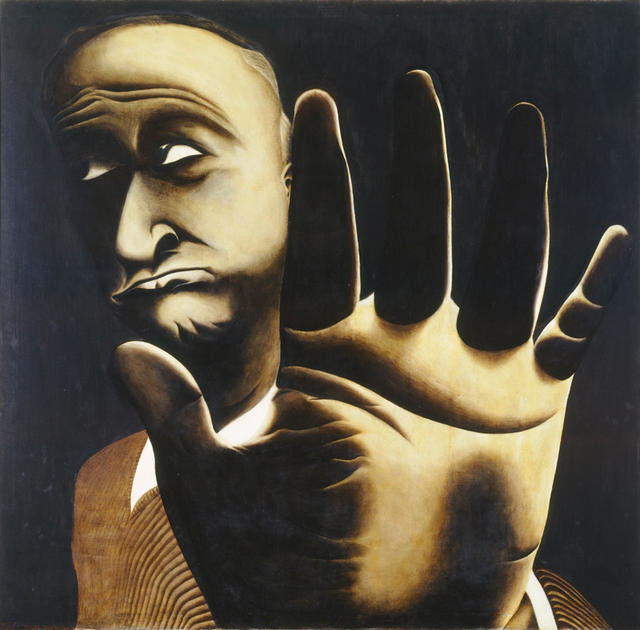Philip Clairmont
Aotearoa New Zealand, b.1949, d.1984
Fireplace
- 1971
- Acrylic on unstretched hessian
- Purchased 1972
- 1835 x 3625mm
- 72/18
Tags: abstraction, anthropomorphism, Expressionist (style), fireplaces, fires (events), flames, stars (motifs)
Philip Clairmont’s Fireplace was originally part of a larger painting of an interior completed for a 1970s Christchurch's nightclub called ‘15 Jellies’. The painting survived a fire that closed the club and afterwards was separated into three works including Fireplace. In the late 1970s Clairmont stated: I started painting interiors in my honours year at art school because we lived in this cramped Clifford flat in Hereford Street and I spent a helluva lot of time at home there. … The house we lived in had such beautiful fireplaces surrounded by decorated tiles and things like that. … I have painting binges. Usually at night because I prefer artificial lighting. I like a lot of music because it makes me paint at different speeds. It’s almost like conducting with a paint brush. I like the gesture of painting… You’ve got to psych yourself into it. Into a state of attack really, because you've got something going on in your head.
(No! That’s wrong XXXXXX, 25 June 2016 – 30 April 2017)
Exhibition History
Brought to light, November 2009- 22 February 2011
Philip Clairmont often chose familiar domestic items as his subjects, but he approached them from unfamiliar angles: ‘I think an object has a life of its own. It has its own essence. And it’s that essence I’m trying to express by changing and transforming the shapes.’ Here, a fireplace is presented as a living entity, with a grotesquely grinning mouth and ‘eyes’ in the form of the tear-shaped flames and sparks from the grate. Much of Clairmont’s work shows the influence of German expressionism, in which colour is intensified and scale distorted to provoke an emotional reaction in the viewer. The hallucinatory effect also shows Clairmont’s interest in the psychedelic art of the 1970s.
Philip Clairmont often chose familiar domestic items as his subjects, approaching them with his distinctive point of view, “I think an object has a life of its own. It has its own essence. And it’s that essence I’m trying to express by changing and transforming the shapes.” Here, a fireplace is presented as a living form, with a grotesquely grinning mouth and ‘eyes’ in the tear-shaped flames and sparks coming out of the grate. Much of Clairmont’s work shows the influence of German Expressionism, a style in which colour, form and scale are intensified and distorted to provoke an emotional reaction in the viewer. The hallucinatory atmosphere also shows Clairmont’s interest in the Psychedelic art of the 1970s. Clairmont was born in Nelson and studied at the University of Canterbury. He moved to Auckland in 1978. He participated in individual and group exhibitions throughout New Zealand and twice received a Queen Elizabeth II Arts Council Grant. (Contemporary Collections, 2002)
